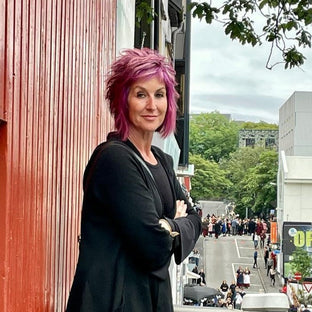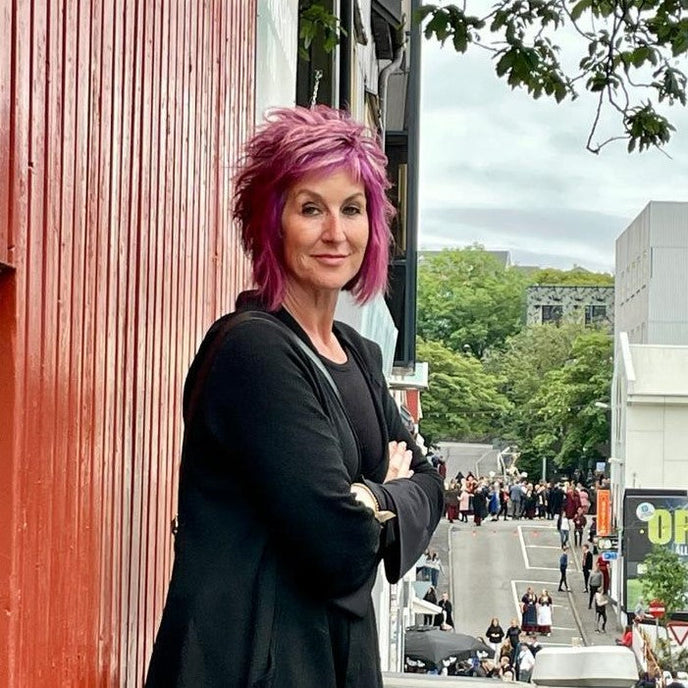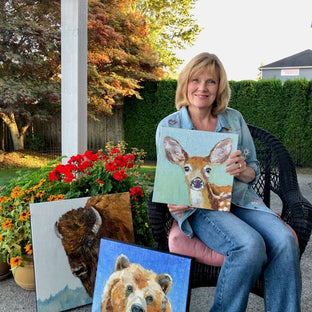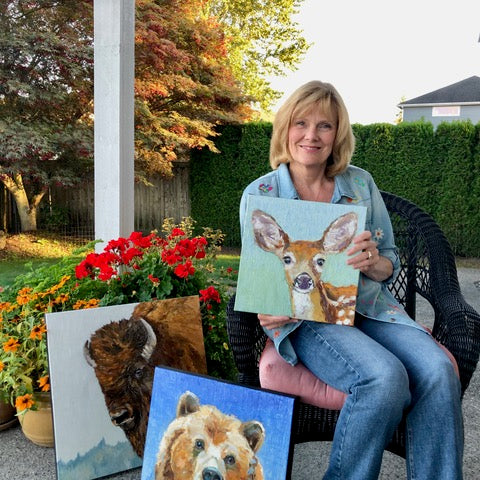A Creative Interview With Artist Guigen Zha



"My work is a reflection of a lifelong journey—one shaped by cultural dislocation, poetic memory, and philosophical search. It's not only visual but emotional and spiritual."
Artist Guigen Zha paints realistic nature scenes and conceptual compositions that blend traditional Chinese art with contemporary elements. His recurring theme of Eastern cultural relics brings honor to his deep connection to his heritage. Guigen's creative passion led him to a fruitful career in China before he migrated to the United States to continue his studies. Guigen enjoys listening to Peking Opera while painting in his sunny home studio. Outside of his artistic practice, Guigen spends time writing and bonding with his family.
In this interivew, Guigen talks about his cultural roots and love of surrealism, and how these two shape his art.
Please tell us about yourself. What’s your home life like? What are your special interests?
I’m a painter based in Rancho Cucamonga, California, but my artistic journey began in China, where I was born in 1970. I spent many years working in Shenzhen and Shanghai as an art teacher, animation background artist, and graphic designer before moving to the U.S. to further my education. I earned a BFA from Missouri State University in 2014 and an MFA in Painting from the University of Missouri-Columbia in 2018. Today, I continue to paint and work part-time as a graphic designer. My home life is quiet and deeply fulfilling. I work from my home studio, where I can be in a state of tranquility and contemplation. My family is my greatest source of strength—they keep me grounded and inspired. Outside of painting, I enjoy writing poetry, which allows me to express emotions and ideas that often inform my visual work.
What are you most proud of, whether in art or another part of your life?
I am proud of the way I've been able to bridge cultures through my art—bringing elements of traditional Chinese painting into dialogue with contemporary and surrealist styles. Being recognized internationally—from Hong Kong to Germany to the U.S.—has been humbling, but I'm especially proud of maintaining authenticity in my work. I'm also proud of the balance I've found between my creative practice and family life.
Do you have any studio rituals that help you get into a creative flow?
Yes. Before painting, I usually spend time in silence—sometimes meditating, sometimes simply observing nature or reading poetry. This quiet reflection helps center me. I don't rush into a canvas. I like to sit with an idea or an image for a while, letting it form naturally in my mind before translating it into paint.

How do you structure your day?
I begin each day with tea and quiet reflection, often writing or sketching in my journal. I prefer to paint in natural light, which feels more in harmony with the spiritual and visual clarity I seek. Later, I might work on design projects. I always carve out time to be with family or sit in stillness. This balance between creation and presence sustains me.
Where do you find inspiration for your art?
My inspiration comes from ancient Chinese relics, classical poetry, Buddhist philosophy, and natural forms like rocks and water. Western surrealism also influences how I distort space and time in my paintings. I am deeply interested in the contradictions between eras—past and future, real and imagined—and how they coexist visually.
Tell us about your evolution as an artist.
I began as a teacher and commercial artist in China, where I learned to communicate visually with clarity and precision. Moving to the U.S. opened a new space for conceptual exploration. Over the years, my practice has become a synthesis of traditional Chinese aesthetics and modern Western approaches. As noted by Curate LA, I strive to transcend cultural boundaries and create a language that feels universal yet deeply personal.
How do you decide when an artwork is finished?
A painting is finished when it feels emotionally complete—when the composition carries the weight of the idea without saying too much. I often step away from a piece for several days and return with fresh eyes. If the work still resonates with candor, belief, and hope, then I know it's ready. Like poetry, a painting must leave space for the viewer's imagination.
What is the most interesting observation someone has made about your work?
A viewer once described my paintings as "digital scrolls from the past and future at once." That comment resonated deeply. It affirmed my goal to blend the timeworn elegance of traditional Chinese art with the metaphysical ambiguity of modern visual culture. My work lives in that liminal space—between the seen and unseen.
Is there an artwork from another artist that has had a significant impact on you?
There are many, but I've always been moved by the classical landscape scrolls of the Song Dynasty for their spiritual stillness, as well as the surreal works of René Magritte for their psychological depth. Both have taught me about the power of symbolism and space—and how to create visual tension that feels poetic.

What's your favorite museum?
The Tokyo Metropolitan Art Museum is very special to me. Not only was I honored to exhibit there, but it beautifully curates both traditional East Asian art and contemporary global work. It reflects the cross-cultural and time-transcending dialogue I aim to engage in through my paintings.
Is there anything else you'd like to share to help viewers better understand your work?
My work is a reflection of a lifelong journey—one shaped by cultural dislocation, poetic memory, and philosophical search. It's not only visual but emotional and spiritual. I hope viewers can feel the tension I explore between serenity and contradiction, past and present, East and West. If even one person feels transported or reminded of a forgotten dream or feeling, then my work has done its job.
Discover more artist features on UGallery
If you enjoyed this article about Guigen Zha's life and artwork, we recommend reading about Lisa Carney's abstract art.







